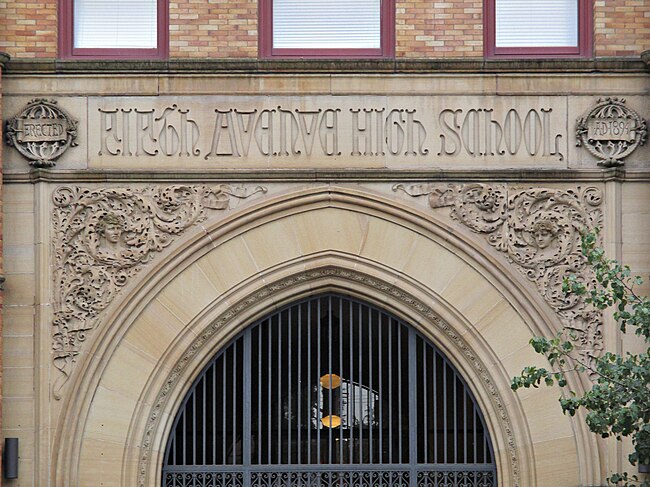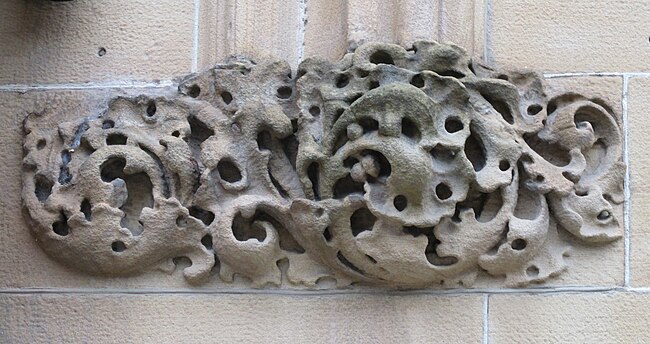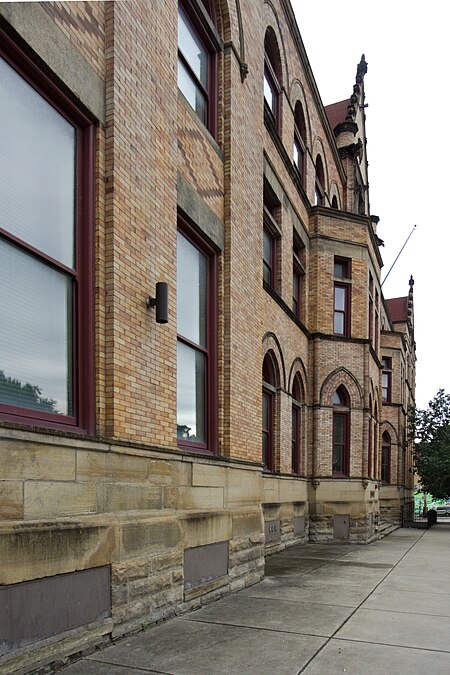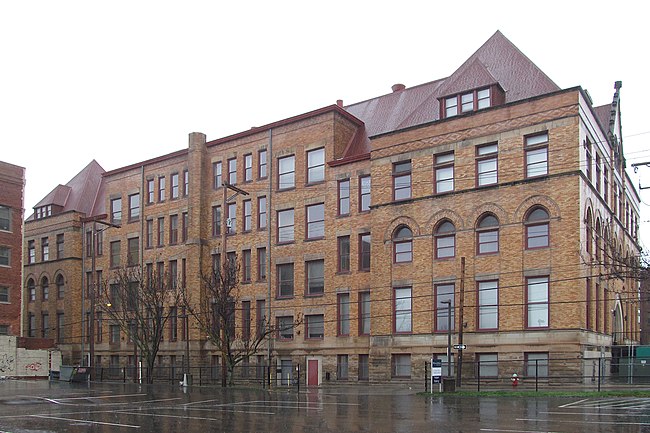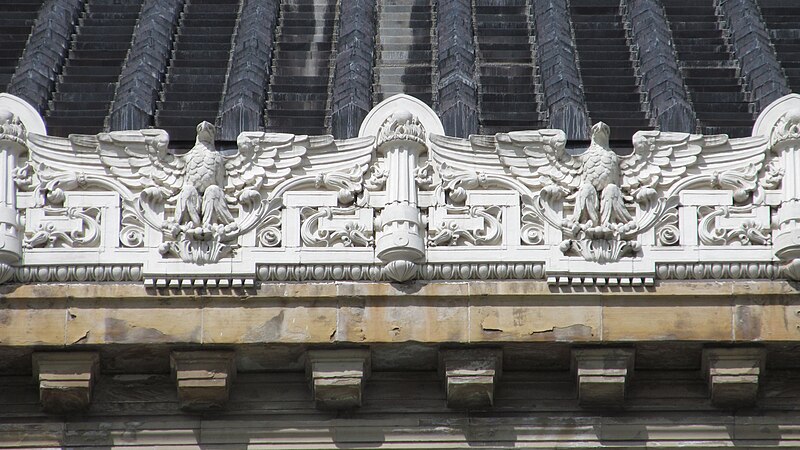
A particularly fine Art Deco design. Neighborhood telephone exchanges were put up all over the city, and the telephone company, which had all the money in the world, always made them ornaments to their neighborhoods. This one still belongs to the successor of the Bell Telephone Company.
Addendum: The architect was almost certainly Press C. Dowler. According to the Pennsylvania Historic Resource Survey Form for the Bell Telephone Company of Pennsylvania Western Headquarters Building, “Between 1935 and 1955, Press C. Dowler designed in excess of 60 buildings for Bell Telephone Company of Pennsylvania in the Pittsburgh region.”












